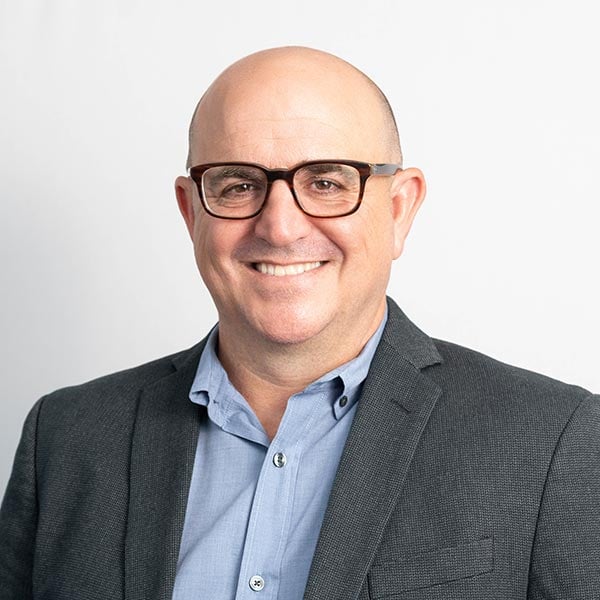What’s the difference between anxiety and panic attacks? How can I stop a panic attack once it starts without using medication? Can panic attacks be caused by withdrawal? Your questions answered.
There is a big difference between anxiety and a panic attack. While anxiety is a general, ongoing sense of worry, fear, stress or restlessness which can be highly uncomfortable and can accompany you throughout your day, panic attacks are exactly as they sound — a sudden and strong attack of panic. Panic attacks can be tremendously scary. They often come without warning, sometimes with no particular external trigger. Your palms get sweaty. Your heart begins to race. You feel a pressure in your chest. You may feel disoriented and confused. The floor can feel like jello and your visual perception may become distorted. It could feel as if someone has slipped you a hallucinogen without you knowing. You can feel detached from reality, floaty or dizzy. Your mind can begin to race, convincing you you’re having a heart attack or stroke. Your fearful thoughts only speed up the momentum and strength of the attack.
While the symptoms of a panic attack can vary from person to person, the common denominator is that panic attacks are strong and sudden. Many individuals end up in an emergency room the first time they experience a panic attack because they don’t know what is happening to them.
However, for those of us who have experienced a panic attack before, we often begin to develop a sense of when a panic attack is coming on. Or, if we can’t sense it before it crescendos, then we at least know what is happening to us while it’s happening. If we are in recovery from drug or alcohol addiction, we can’t pop a Xanax or Ativan. So what can we do? How can you stop a panic attack once it starts without medication?
Start Healing Today!
Choose recovery and take control of your life, it’s the path to a brighter future filled with health, happiness, and fulfillment.
6 Tricks for Stopping Panic Attacks
#1: Conscious Breathing
First and foremost, you need to practice conscious, controlled, slow breathing. Our temptation when a panic attack comes on is to start hyperventilating. This cuts off oxygen to the brain and tightens the body, which makes the panic attack worse. When you feel a panic attack coming on, sit down, place both feet firmly on the floor. Relax your body and imagine yourself melting into the chair you’re sitting in. Perhaps close your eyes.
Then focus on your breath. In…and out. In…and out. Feel your belly and chest fill with air, then feel them pull in as the breath exits your body. Breath in to a count of five. Breath out to a count of five. Slow the pace to a count of six. Then seven. Progressively slow the breath. While you breathe, practice a mantra or a visualization.
#2: Positive Mantra
As your breathing slows, practice a positive mantra in your mind.
“I am ok. I am safe. This will pass.”
Repeat it. “I am ok. I am safe. This will pass.” Be still. Continue breathing. In and out. “I am ok. I am safe. This will pass.”
If intrusive thoughts try to overrun your mantra — for example, you say “I am ok. I am safe,” and an intrusive thought slips in and says “No I’m not! Oh my God my heart is racing so fast. Oh my God I can’t breathe” — do not follow those thoughts. Do not engage them. Let them float by as if they are litter floating on a stream. Continue your mantra and your deep breaths over and over, ignoring intrusive thoughts, until the pace of the attack slows.
#3: Ice, Rubber Bands & Sensory Stimuli
Many of us start to feel disoriented during a panic attack as if we are suddenly floating outside of our bodies. Using something sensory can help return you to your body. For example, get two handfuls of ice cubes from the freezer and hold them in the palms of your hands. Or, use a rubber band on your arm to lightly snap a few times on the inside of your wrist. Feel the stinging sensation of the snap. These sensations can bring you back to reality.
#4: Naming Exercise
What often happens during a panic attack is that the brain goes into fight-or-flight response. When this happens, you experience a surge of adrenaline and your brain actually shifts from operating out of the prefrontal cortex (which is the rational part of the brain) to operating out of the amygdala (which is the survival mechanism of the brain and controls fear). The goal of a naming exercise is to shift the brain back into operating from the prefrontal cortex. You can do this quite simply by naming things in your environment and stating facts about them:
“That is a chair. That pillow is purple. That is a television. That apple is red.”
This can seem silly, but by using the rational part of your brain to name things, you will neurologically shift your brain out of the amygdala and into the prefrontal cortex. Once this shift occurs, you are able to access your rational thoughts again, such as “I am fine. That was just a panic attack. Everything is OK.” Until you have shifted your brain back into the prefrontal cortex, it can be hard to access those more rational thoughts.
Complimentary Insurance Check
Find Out Today!
"*" indicates required fields
#5: Develop Your Happy Place
Before you have your next panic attack, you should develop a happy place in your mental imagination. This place should incorporate your five senses and be a place you can easily access in your mind whenever you start to feel a panic attack coming on. In this imaginative place you should feel peaceful, safe and happy. It could be someplace beautiful in nature or with someone, or something, you love. For example, you could imagine yourself watching a brilliant sunset over the Pacific Ocean with your feet in the sand, or sticking your feet in a babbling creek surrounded by trees, or petting the soft fur of your jolly Golden Retriever, or looking at the details of your lover’s face. Have this “happy place” readily available for your mind to visit. The next time you experience a panic attack and you go into your deep breathing, close your eyes and let your mind go to this place. Notice its details — its sounds, temperature, smells and textures.
#6: Try Tapping
Tapping is an exercise that is designed to stimulate the connection between the two hemispheres of the brain (this is called “bi-lateral stimulation”). Your right side of the body is connected to the left hemisphere of the brain, while the left side of the body is connected to the right side of the brain. The two different sides of the brain process different information — rational facts, versus emotions. Tapping is an exercise that incorporates movement in the body, alternating from the right side, to the left side.
The easiest way to practice tapping is to cross your arms and place your hands on opposite biceps. Tap your right hand on your left bicep. Tap your left hand on your right bicep. Alternate. Tap your right hand. Tap your left hand. Tap your right hand. Tap your left hand. Repeat for a minute or two.
Another way you can do this is by snapping your fingers, alternating from right to left. Or try tapping your knees.
By utilizing the right and left side of the body, you trigger the right and left sides of your brain. This allows you to balance your ration with your emotion. The technique reduces the irrational fear, stress and worry that is brought on during a panic attack.
Are My Panic Attacks Caused By Withdrawal?
Panic attacks are quite common among individuals who struggle with drug or alcohol abuse. There could be a few reasons for this. Individuals who are already prone to anxiety and panic attacks often self-medicate with drugs or alcohol. The reverse is also true — drugs and alcohol can exacerbate symptoms of anxiety. Furthermore, drug and alcohol withdrawal can trigger panic attacks.
When the body is accustomed to ingesting drugs or alcohol on a regular basis, the central nervous system compensates to make up for the regular presence of those substances. When drugs and alcohol are no longer present, the central nervous system remains in overdrive for a time. This can trigger a range of symptoms including high blood pressure, shaky hands, hot flashes and the dreaded panic attack.
Unfortunately many individuals who are experiencing panic attacks as a result of drug or alcohol withdrawal don’t recognize that their panic attacks are being caused by withdrawal. They will seek the help of a doctor who also doesn’t know the real source of the panic attacks. The doctor sometimes writes a prescription for benzodiazepines such as Xanax or Ativan to help. These prescriptions often only further the individual’s substance use disorder. Benzodiazepines can be extremely addictive.
Our Locations
Our Facilities & Teams Transform Lives
Changing lives by providing comprehensive support and rehabilitation, empowering individuals to overcome addiction and regain control of their health and well-being.
Seek Healing
If you think your panic attacks could be the result of drug or alcohol withdrawal, or if you have been prescribed a benzodiazepine and now are experiencing benzo dependency, Guardian Recovery can help. Our medical detox facilities use medication and round-the-clock medical supervision to help ease the symptoms of withdrawal. Our medical detox facilities are all homestyle, modern, comfortable facilities where you will feel right at home.
It is sometimes difficult to tell which came first — the anxiety or the substance abuse — because they both exacerbate one another. Once you are physically detoxed from drugs and alcohol, then our psychiatric professionals can help you assess any underlying conditions you might be, of have been, experiencing such as depression, anxiety or panic disorder. Our professional staff is highly experienced in treating co-occurring disorders. The first step is to detoxify the body so they can get a clear picture of what has been going on for you.
If you are curious about medical detox or have questions, please reach out to us anytime. Our compassionate Treatment Advisors are here for you 24/7. They can help you craft a strategic plan for your physical and emotional healing.
SELF-ASSESSMENT:
Do I have an Addiction issue?
Disclaimer: Does not guarantee specific treatment outcomes, as individual results may vary. Our services are not a substitute for professional medical advice or diagnosis; please consult a qualified healthcare provider for such matters.
Sources









